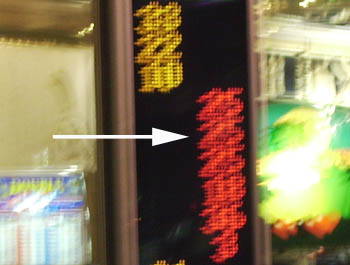When evaluating the probabilities of an outcome, I’ve seen many superstitious behaviors, from kissing dice to wearing a lucky shirt. The core nature of superstition relates to trial re-trial probabilities, and it’s worth a closer examination.
When you toss a fair coin five times and it always comes-up “heads”, what is the probability of a “heads” on the sixth roll? A scientist will tell you that the probabilities between trials are always exactly the same regardless of previous outcomes, but real-world experience documents “streaks” which cannot be explained by science.
So, is the belief in “streaks” superstitious? How do we reconcile the fact that trial, re-trial probabilities are always exactly the same with the equal fact that “luck” runs in streaks? After all, it’s silly to leave a table when you are winning every hand, and it’s not too bright to stay at a table when you are loosing every hand.
Clinically, superstitious behavior occurs when the subject feels that their outcomes are governed by random chance, and there is a natural tendency to search for causation, even when none exists. Hence, it’s no surprise that many professional gamblers indulge in superstitious behavior.
When lightening strikes thrice
In real-world observations, streaks do exist, and random number analysis shows that winning-losing “streak” combinations occur quite frequently. Is it superstitious to stay at the gaming tables when you are “on a roll”?
We are at a client site where there is little to do after work but gamble in the casinos. Janet was at the roulette table today, and she bet straight-up on black 25, plus a 5x street bet. She was thrilled to win the first time, and left the bet on the table.
The second time the wheel landed on black 25 again (with Janet retaining her original bet) , a probability of (38**2) , or a 1,444 chance of “lightening striking twice”. But that not the end of the tale.
To further confound probability theory, the third roll also returned a black 25 (with her same bet retained), and the roulette croupier stopped play to show the pit boss about this amazing event, as he handed Janet her stack of $100 chips. (we were afraid that they would throw her out, as casino’s are not public places, and large winners are frequently ejected).
The statistical probability of the same number hitting three times in roulette are 38 cubed, of (38**3 = 51,942), a 50k chance that the same number would come-up three times, and even more remarkable that Janet would retain bets on these numbers.

Now, we loose as much as we win in roulette, but nobody can deny that amazing statistical “streaks” occur. Any professional gambler will tell you to “ride the wave” when you are hot and “lay low” when the cards are against you.
Beginners luck
I believe in beginners luck and I’ve seen enough first-hand anecdotal evidence to believe in the beginners luck. The very first time that Janet played in a Texas Hold-em tournament, first hand, she got a royal straight-flush, something that occurs once out of 65,000 hands.
On Janet’s first time playing bingo, she won a cruise ship jackpot of over $4k, and call me superstitious, but I’m a firm believer in beginners luck.
Psychologists have done many studies on superstitious behaviors. This paper titled “An Exploratory Investigation of Superstition, Personal Control, Optimism and Pessimism” is great, and check out the great book “Believing in Magic: The Psychology of Superstition” for a great read about superstitious behaviors and scientific probabilities.

